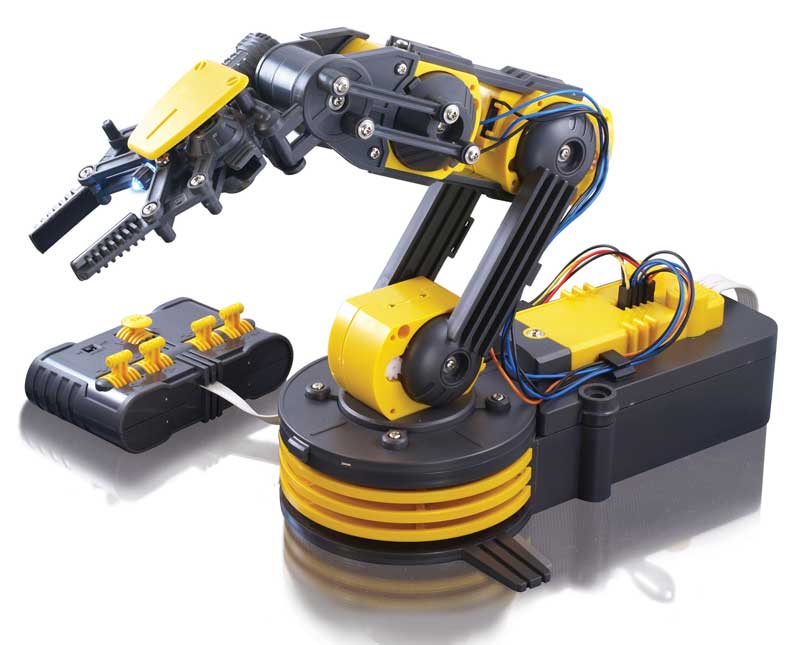New modular robotic arms being attached to submarines to give deep-sea researchers better dexterity
01/02/2019 / By Edsel Cook

Harvard researchers have developed a new type of robotic arm that can be fitted aboard deep sea submarines. The modular mechanical limbs can operate with a level of dexterity and finesse close to that of a human arm, a Science Daily article reported.
The new arm is meant to be used with the soft robotic grippers developed by Harvard’s Wyss Institute (Wyss). The combination will let the researchers controlling the submarines interact with jellyfish, octopuses, and other marine life without hurting the delicate bodies of the latter.
The arm itself is made up of multiple soft robotic modules. This arrangement made the limb very flexible and dexterous. It is controlled by humans through a glove fitted with wireless soft sensors.
Once refined and perfected, the improved robot arm could lead to the submarine version of the research lab. Marine researchers will be able to perform important experiments at the bottom of the ocean with the same delicacy as their land-bound compatriots.
Medical devices could also use the arm and gripper to perform more complex and careful activities. (Related: Lessons learned using robotic arm in space now being applied to the hospital surgery room.)
A build-it-yourself robot arm made out of multiple soft robotic modules
The Wyss-developed robotic arm system has three specialized modules. One can bend, another can rotate, and the third is the gripper module.
The modules can be combined in different numbers and ways. Individual modules can be added or removed as needed, making it easy to customize an arm to tackle the many different environments found underwater.
Furthermore, the new soft manipulator is controlled by a hydraulic system that is very small and tough. It can, therefore, work in inhospitable and isolated areas, such as the cold and crushing depths at the bottom of the sea.
In comparison to the smallest commercial electronic manipulator arm explicitly designed for sea work, the Wyss system uses much less power. Their battery capacity primarily constrains the operational time of manned submersibles, so a robot arm that conserves energy is a handy piece of equipment.
To control the arm, the user puts on a glove fitted with soft sensors. The robot arm will bend and rotate whenever the user moves the wrist, while the curling of the index finger activates the grippers.
The hydraulic engine of the robotic arm is driven by seawater from the immediate environment. Various valves will open and close to let water in and out of the system. These will direct the movement of the arm.
This robotic arm has got the situation in its soft gripper hand
The Wyss Institute designed an appropriate gripper for almost every critter out there. One soft robotic hand can safely interact with coral that can break very easily, while a different unit can safely capture and release a jellyfish.
“The currently available subsea robotic arms work well for oil and gas exploration, but not for handling delicate marine life — using them is like trying to pick up a napkin with a metal crab claw,” explained study co-author David Gruber, who teaches at the Baruch College, City University of New York. “The glove control system allows us to have much more intuitive control over the soft robotic arm, like how we would move our own arms while SCUBA diving.”
Both the robotic arm and the grippers were fitted aboard a small submarine in the deep-sea environs off the coast of Brazil’s Fernando de Noronha archipelago. The field test was a success, and the researchers are planning to improve its capabilities.
You can read more articles about the latest mechanical limb systems at Robotics.news.
Sources include:
Tagged Under: deep sea, future tech, marine life, robot arms, robot jobs, robotic arm, robotic gripper, robotics, science and technology, Soft Robotics, soft robots, submarines



















